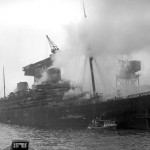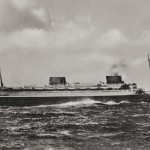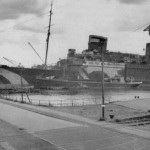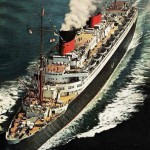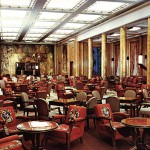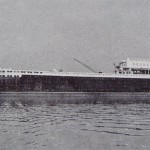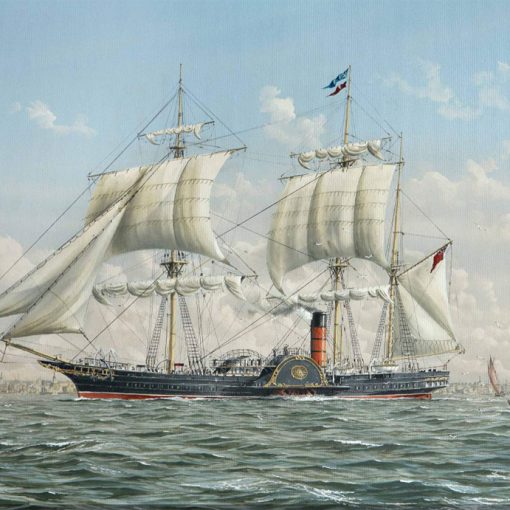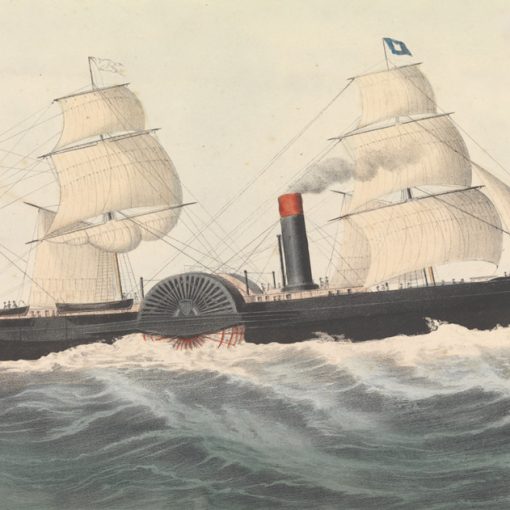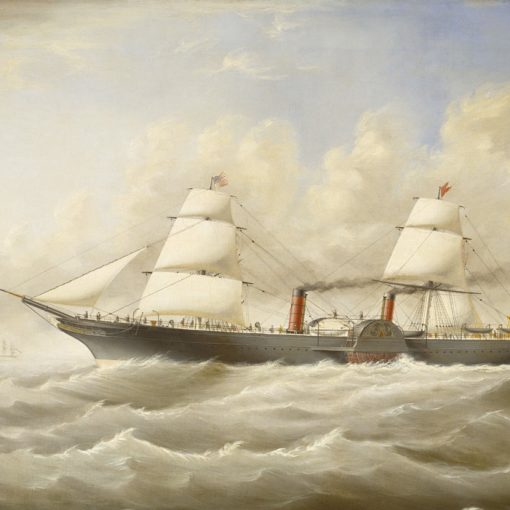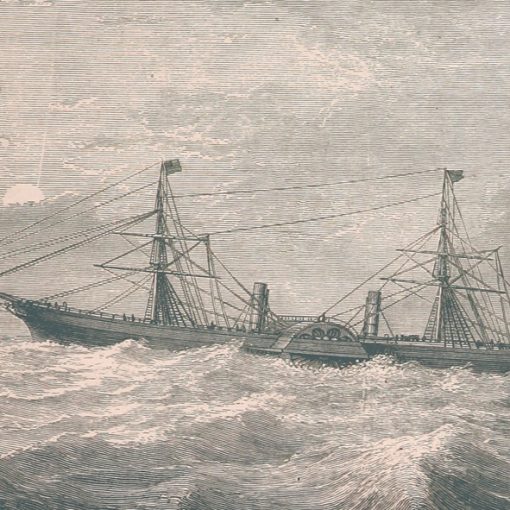1930 – 1962
Also known as Liberté
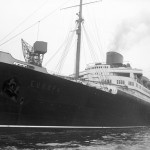
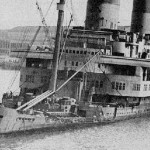
Germany and her allies had lost World War I, and in the early twenties the former empire stood without its once so glorious merchant fleet. Albert Ballin’s great trio consisting of Imperator, Vaterland and Bismarck had been handed over to the victorious states. The old German Blue Riband holders from the century shift had either been confiscated or destroyed. The only ship that remained with some former glory was the Deutschland from 1900. But – she was a hopelessly outdated ship, and as soon as the Germans had rebuilt their country, efforts were put in order to construct new ocean liners.
Two ships were commissioned from Norddeutscher Lloyd in the late twenties. The two vessels would be the Bremen and the Europa. The first of the two was to be the latter ship. On August 1, 1928, the Europa was launched at the Blohm & Voss shipyard in Hamburg. The Bremen was launched in the appropriate city of Bremen the day after, so now Germany had risen from nothing to a position where they operated the two fastest liners in the world. However, destiny would make the Europa to a halt in further construction. On March 26, 1929, the ship was almost entirely completed, but before the official handing over to Norddeutscher Lloyd a mysterious fire broke out on board. In order to extinguish the blaze, the whole ship was scuttled on an even keel. It would take the Europa a further ten months before she could reach completion. This made the Bremen the first of the duo.
Finally, the Europa was made ready for her sea trials in 1930, and on February 22, the tests took place. Everything about the new vessel was perfectly satisfactory, and on March 19, 1930, the latest pride of Germany started her maiden voyage. This trip would prove to be a success as the steamer took the westbound record from her sister with a time of 4 days, 17 hours and 6 minutes. During the voyage it was discovered that soot disturbed the passengers, and on her return to Europe, the Europa had had her funnels heightened by fifteen feet.
The two German sisters continued their peacetime service, and no ship seemed to give them a match in quest for the Blue Riband. The ‘battle’ was between the sisters themselves. In 1933, the Europa lost her record to the Bremen. However that same year, the Italians snatched the westbound record from Bremen with their brand new 50,000-tonner Rex.
As time went by, things changed. In 1936, the old class system was abandoned on board the ship, and the Europa’s accommodation was reclassified as Cabin, Tourist and Third class. This was not the only novelty. As Adolf Hitler wanted to regain Germany’s lost pride after the First World War with plans of starting a full scale war in Europe, the Bremen and Europa was eyed for the use as troop carriers. On August 10, 1939, the Europa made her last peacetime crossing for several years. When Hitler invaded Poland on September 1, the Europa had returned to Germany after that transatlantic voyage. From her position in Bremen, she was sent to Bremerhaven to carry out her war task as a naval accommodation ship. There the ship stayed until plans came to operate her in ‘Operation Sealion’. This operation meant that the Europa would sail to Norway, pick up friendly troops and carry them to southern England, where Germany planned an invasion. This plan was however abandoned, because the German Kriegsmarine opposed it as suicide. In 1942, new plans arrived concerning the Europa. She would be turned into an aircraft carrier with an over 900 feet long flight deck. This was also abandoned together with Hitler’s stopping of the work on the carrier Graf Zeppelin in May that year. This was the last thing the Europa would do for German purposes.
In May 1945, the ship was confiscated by the United States who used her for some major trooping duties later that year. The following year – in March, when Germany’s defeat had been a fact for months – the Europa was handed over to France in order to replace the fabulous Normandie, who had been destroyed by fire at New York harbour in 1942. The French intended to rename the ship Lorraine, but eventually decided upon Liberté. The former Europa was towed to Le Havre for her Compagnie Générale Transatlantique refit. The first change you would notice was that of her funnels. Instead of the yellow N.D.L. livery, they were now in customary C.G.T. colours – red with a black top. In December the same year, the still refitting Liberté broke loose from her moorings during a storm and drifted into the adjacent wreck of the Paris who had sank on the spot after a fire in 1939. The C.G.T. did not want the occurrence with the Normandie to re-appear, so the entire Liberté was deliberately sunk in the harbour on an even keel to prevent her from heeling over. All efforts were then put to raise the ship, and in April the following year the task was completed. The vessel was towed to S:t Nazaire and rebuilt at Penhoët shipyards at the cost of £7,000,000. In 1949, yet another fire broke out on board and destroyed much of the new passenger accommodation areas. Not until August 17, 1950 was the Liberté ready to enter the waves for the glory of France. Her partners became the fabled Île de France and the De Grasse, making the French Line operate a very distinguished trio of ships.
The Liberté continued in C.G.T. service throughout the fifties with no major changes except for the bettering of the ship’s funnels. A discrete dome had been added to top each of the now slightly higher funnels in order to further lead the smoke away from the passengers’ areas. The beginning of the sixties however showed that the Liberté was an old ship dating back to the twenties. The Île de France had disappeared in 1958, and announcements stated that the Liberté would be replaced by a new 65,000-tonner. That 65,000-tonner was the new France, and when she entered the transatlantic route in February 1962, the Liberté had gone to the scrap yards in La Spezia, Italy a month earlier. Being almost 33 years old, the former Europa had only seen 21 years in passenger service at the time of her retirement.


Specifications
- 936 feet (285.9 m) long
- 102 feet (31.2 m) wide
- 49,746 gross tons
- Four 25,000 hp steam turbines powering four propellers
- 27 knot service speed
- Passenger capacity of 2,024 people

